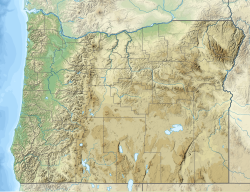| North Fork Dam | |
|---|---|
| Country | United States |
| Location | Clackamas, Oregon |
| Coordinates | 45°14′36″N122°16′47″W / 45.24333°N 122.27972°W |
| Dam and spillways | |
| Height | 206 ft (63 m) |
| Length | 676 ft (206 m) |
| Width (crest) | 8 ft (2.4 m) |
| Width (base) | 32 ft (9.8 m) |
The North Fork Dam is on the Clackamas River, about five miles upriver from Estacada, Oregon. [1] It was built in 1958. [1] The North Fork Reservoir is behind it.

